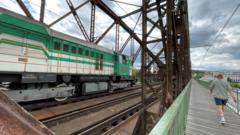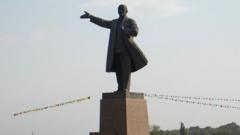While Helga Crane, the protagonist of Nella Larsen’s groundbreaking novel “Quicksand,” navigated the streets of Copenhagen, she became a spectacle to onlookers in the 1920s. “Her dark, alien appearance was to most people an astonishment,” wrote Larson, an influential Harlem Renaissance author in her 1928 work that details a mixed-race woman’s quest for belonging. Fast forward almost a century, and the landscape of Copenhagen is distinctly different; Black individuals now walk through the city with less scrutiny amid rising immigration from various regions, including Africa and the Middle East. Yet, many of the settings that inspired Larsen’s Helga Crane remain unchanged.
Copenhagen’s vibrant cyclists are as prevalent now as they were during Helga’s time, when she dodged "innumerable bicycles like a true Copenhagener." The city's unique, colorful architecture, recently recognized by UNESCO as the World Capital of Architecture in 2023, continues to captivate visitors. Denmark's consistent ranking as one of the happiest countries globally suggests a lasting charm.
While Larsen did not explicitly document her life in Copenhagen, scholars have long considered “Quicksand” to be semi-autobiographical. The discovery of a passenger manifest by biographer George Hutchinson and insights from Danish genealogist Shari Jensen reveal that Larsen had familial connections to Copenhagen, paralleling her fictional creation. Born to immigrant parents – her mother Mary from Denmark and her father Peter from the Danish West Indies – Larsen's upbringing in Chicago's segregated neighborhoods and her time in Denmark shaped her literary voice.
Larsen returned to the US in 1912 and penned “Quicksand,” intricately weaving her experiences in Denmark into her narrative, notably in the novel's middle section. Following its 1928 publication by Alfred A. Knopf, the book garnered significant acclaim, including praise from prominent figures like W.E.B. Du Bois, who called it “a fine, thoughtful and courageous piece of work.” Today, as we reflect on Larsen’s life and influences, her journey through Copenhagen continues to resonate, revealing the profound intersection of identity and place in shaping an artist's vision.






















